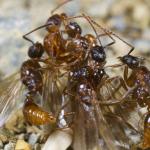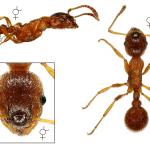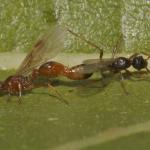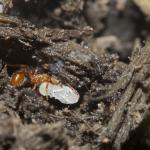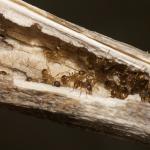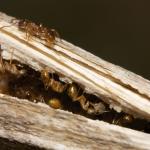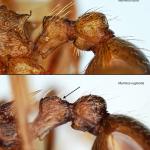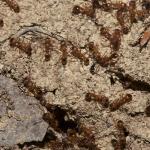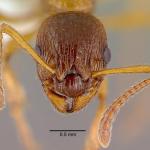Myrmica ruginodis is a common red ant and could well be Britain’s commonest ant. Workers are 4–6 mm long, slender and usually fairly slow moving. The antennal scapes are long and slender with a gentle curve at the base. The area between the spines on the propodeum has ridges across it and the spines are usually long. The petiole node has a flat dorsal top with a distinct angle to the posterior area and this is the easiest character with which to separate them from M. rubra (Linnaeus). Queens are similar to workers and 5.5–7 mm long. Some nests will have microgyne queens that are about the same size as workers. Males are fairly large at 5–6mm and have scapes that are long and slender. The male tibia and tarsi have short, semidecumbent hairs.
Common all over the British Isles.
Occurring throughout Northern Eurasia.
This species is not regarded as scarce or threatened.
Is found in many habitats including woodlands, moorland, grassland, open urban and agricultural areas, parks, and gardens.
Alates can be found in the nest from early July and flights usually occur in August.
Nests are in the ground, in tufts of grass, under stones and in rotten wood. Colonies are usually polygynous with an average of 15 queens and a thousand workers or more.
They feed on honeydew from aphids and scale insects and drink nectar from flowers. They are less aggressive than M. rubra and are less likely to sting.
2019


